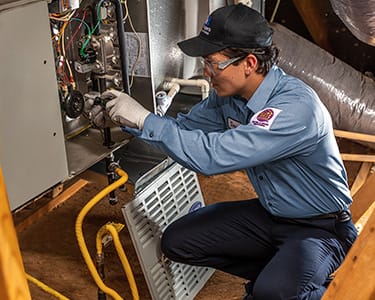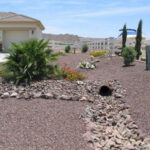
It’s important to be aware of the potential risks and hazards of doing your own Furnace Repair. You should also know about proper furnace maintenance to ensure you and your family are as comfortable and as energy efficient as possible.
Furnaces are complex machines. Their internal parts, like the blower, can become loose over time. Fortunately, there are a few things you can do to keep them running smoothly.
The first thing you should do is make sure that the filter is clean. A dirty air filter will restrict airflow.
Another important item to check is the fan belt. A faulty belt can cause squealing and screeching sounds. You may need to replace the belt or add lubricant to prevent future squealing.
The furnace’s heat exchanger and motor can also cause a rattle. If you see a large rattle, it could mean that there is a problem with your ductwork, and you will want to call a technician to investigate.
Depending on the particular model, your furnace might make other noises. For example, you might hear a rumbling sound when you turn the temperature up. This could be caused by an issue with the ductwork or an older furnace.
The blower motor is also responsible for making a lot of noise. During normal operation, it can make a number of sounds, including banging, rumbling, and humming. It’s best to address these problems as soon as possible to avoid unnecessary damage to your furnace.
Dust, soot, and rust can cause damage to your home. They can also create a health hazard, so it’s important to keep them under control. When you notice a build-up, call a furnace repair professional.
If you have an oil or gas fuel heater, make sure it has a working carbon monoxide detector. The presence of this gas can cause unconsciousness and death.
The combustion chamber in a furnace releases soot, dirt, and rust into the air. When it’s dirty, the furnace cannot produce adequate heat. The build-up can cause respiratory problems and other bad inhalants. If it’s not cleaned, it can even lead to the formation of mold.
If your furnace is over 15 years old, you may need a replacement. The average lifespan of a furnace depends on its use and maintenance.
If you’re hearing a louder or noisier heating system than before, it’s a good idea to check the furnace. It might be leaking or corroding. It’s also a good idea to have a technician inspect the furnace.
If you have a furnace with a pilot light, the light should be blue. If it’s not, it’s probably a problem with the ignition or thermocouple. A yellow flame means that the burner needs to be cleaned. If the light is flickering, it’s a sign that the heat exchanger has cracked.
Carbon monoxide is a colorless and odorless gas that is produced by furnaces and other fuel-burning appliances. Its presence can pose a serious health risk to both the homeowner and the family. Identifying and repairing a leaking furnace can prevent poisoning and should not be delayed.
A CO detector is the best tool for detecting a leaking furnace. It emits a shrill, beeping sound when the air is saturated to a certain level. The detector should be installed near the garage or in each bedroom of the home.
A carbon monoxide leak can occur from many sources, including a faulty heat exchanger. If you suspect that your home is a potential source of a carbon monoxide leak, call a professional HVAC contractor. They can perform an inspection, repair, or installation on your heating system.
A clogged filter can also result in a carbon monoxide leak. To minimize the amount of CO in your home, clean the filters on a monthly basis. A dirty filter can cause the coils of your furnace to overheat and break.
Other causes of carbon monoxide leaks include improper ventilation. If your furnace is not working properly, it can be difficult to detect a leak. However, a carbon monoxide detector can help. Its shrill beeping sound can signal that it is time to take action.

